Matara District is a major commercial hub located in the southwest of Sri Lanka. Matara district is surrounded by a scenic sea belt and full of natural beauty. It possesses a proud history and is a fertile region situated between Galle and Hambantota districts. The region consists of Sinharaja rainforest and many attractive waterfalls. The Matara District climatically belongs to wet zone of the low country.
Historically the area was known as the kingdom of Ruhuna. Which was one of the three kingdoms in Sri Lanka. The Nilwala River runs through Matara where ferries used to cross. Hence, the town was called ‘Maha Thota’ which was derived from the Sanskrit word ‘Maha Theertha’ which means “the great ferry”.
In 1756 under the Dutch ruling, the Maritime Province was divided into four administrative area Sabaragamuwa, Sath Korle,Sathara Korele and Matara. Out of these, Matara District covered the largest area (essentially the whole of the Southern Province up to the Kaluganga River). In 1796 the region was ceremoniously handed over to the British. The Dutch and English culture and architecture can still be seen throughout the area. The lighthouse at Dondra Head is an important land mark which was built in 1890. Dondra Head Lighthouse is considered as one of the most beautiful and oldest lighthouses in Sri Lanka. The two fortresses, the Matara Fort and the Star Fort, built by the Dutch can be seen in the city. Other important Colonial works are the St Mary’s Church and the marketplace at Nupe Junction. Today, the location is popular for SurFing, Dolphin and Whale watching, Scuba Diving, Nature and wild life touring.
MIRISSA
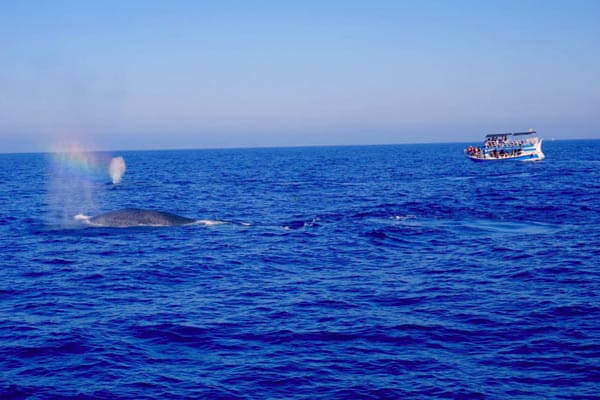
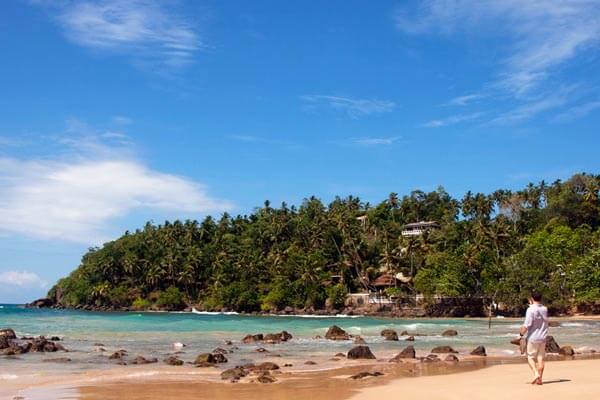
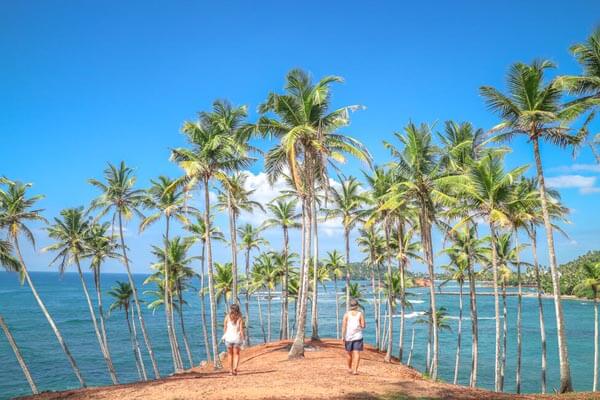
Mirissa is considered a top spot in the world for watching blue, sperm and killer whales as well as dolphin. This is the most popular of the three whale watching locations in Sri Lanka probably due to the beautiful beaches and more organized whale watching infrastructure in the area. The whale watching season for Mirissa is November to April peaking in around December to April. Many operators offer variety of packages with average times of 3-6 hours of sailing.
Sri Lanka has become the latest hotspots for the Blue whale, the largest animal on earth and the heaviest to ever exist on earth. These giant marine mammals lengthen up to 100 feet (30 meters) and upwards 200 of tons.
Activities : Whale and Dolphin Watching
DEWUNDARA THUDUWA - DONDRA LIGHTHOUSE
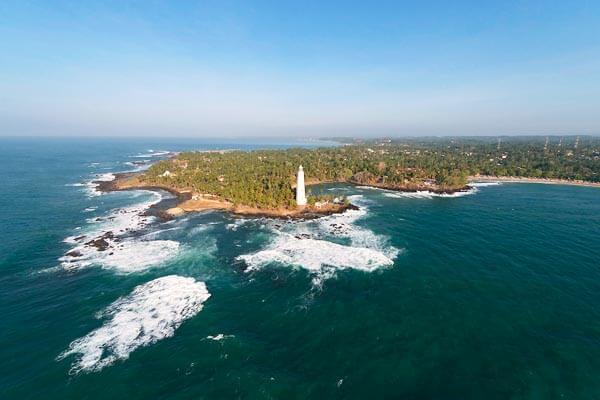
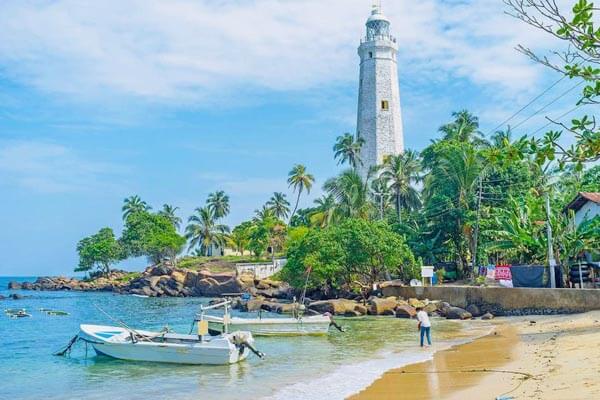
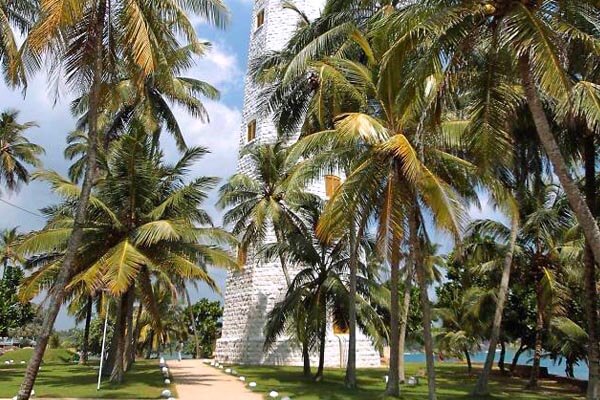
Dondra, the southernmost point on the island, is a quiet fishing village. In stark contrast to the adjacent and overtly manic city of Matara, Dondra as a location is commercially insignificant, yet it is rich in historical and cultural importance. The Dondra lighthouse is the most celebrated structure in the area, while the Devundara Devalaya has links to the 7th century when Dondra was emerging as a key trade hub in the south.
The octagonal brick white tower known as the Dondra Head Lighthouse is the tallest lighthouse in Sri Lanka and also one of the tallest in South East Asia. Dondra Head lighthouse is operated and maintained by the Sri Lanka Ports Authority. The lighthouse is near the village of Dondra, and is approximately 6 km southeast of Matara. The name Dondra is a synonym for ‘Devi-Nuwara” meaning “ city of the Gods”. Dondra Head Lighthouse was designed by Sir James Nicholas Douglass, in November 1887. All the building materials including the bricks and steel were imported from England. The granite rock was supplied from quarries at Dalbeattie in Scotland and penryn in Cornwall. The lighthouse was completed and commissioned in March 1890.
Dondra Head was one of a limited number of lighthouse that were designed to house the large Hyper radiant Fresnel lenses that become available at the end of the 19th century made by Chance Brothers in England. The Light house is 160ft high and contains 7 floors, 14 two panel yellow color windows and 222 steps to the top. It produces white flash every was modernized in 2000 in building a Differential Global Positioning System linking to other major lighthouse around the coast. The impressive piece of architectural structure remained unharmed after the effects of Tsunami in 2004. The premises offer a charming and tasteful sense of tranquility to visitors. The lighthouse is open to public viewing however permission is required for any visitor to climb to the top of the lighthouse. The view from the top the lighthouse is simply a breathtaking view.
Dondra Head was instrumental in bringing about ‘soldiers of Fortune: pearls off Dondra Head’ (1995) movie directed by John English starring john Russel, Chick Chandler, Nancy Gates, Howard Negley, Christoper Dark, Lawrence Dobkin, George Keymas and Dale Van Stickel. The story line is about Tim and Toubo who, upon learning of a rich pearl bed from a dying man, they decide to try their luck at pearl diving.
Dondra is the closest points in the country to a major shipping lane. Over 250 ships pass every day and the lighthouse serves as both a marker for ships as well as a surveillance point for the Navy Matara was an old port town that was one of the key points of trade in the south of the Island centuries ago. The region has been under the rule of numerous kings and then changed hands again during colonial times. The immense historical, geographical and religious importance makes Dondra one of the most discerning places to visit in Sri Lanka.
Activities : Boat Rides, Site Visiting, Deep Sea Fishing, Fishing, Water Sports
KUSHTARAJA GALA - AVALOKITESHVARA BUDHDHA STATUE
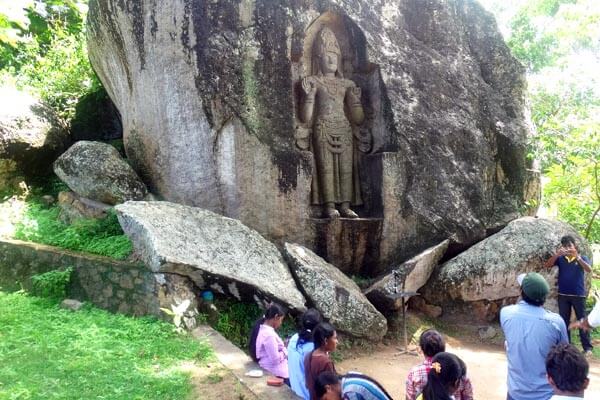
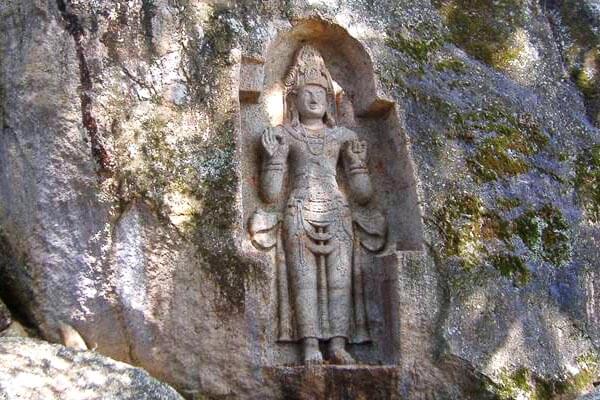
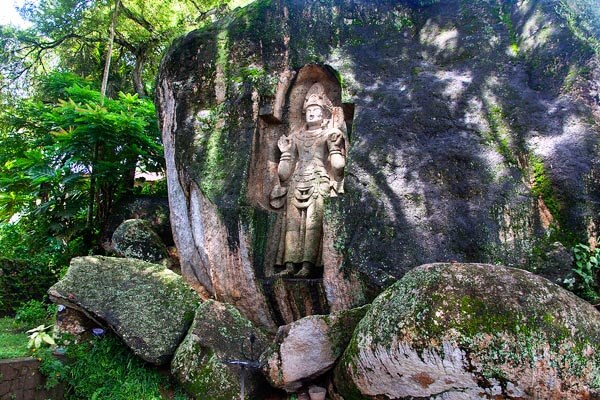
Kushtarajagala of the Weligama Divisional Secretariat Division can be reached on Matara –Colombo road in the town limits at Weligama near Agrabodhi Vihara. Located 12Km away from Matara Town. To reach the site from Galle end, travelers should take the old road before Ahangama across the rail way track. There could be some truth in the above stories as Weligama was a highly prosperous city in the ancient times and had been a center for foreign trade as Weligama was used as a harbour by foreign traders. This colossal image is 383 cm in height is sculptured in solid rock.
The upper part of the statue is uncovered and the lower part is covered with a dhoti and a decorative girdle. The neck is adorned with a few necklaces, the arms with bangles and the feet with anklets. Vitarka Mudra on the right hand, Kataka Hasta Mudra on the left hand and four fingers of the Amitabha Dhyani Buddha on the head gear are found on the statue.
The statue depicts very clearly the Mahayana concept that prevailed in the 6 -7 centuries A.D. There are some folk stories on the image identified definitely as Avalokiteshvara. It is believed that the statue had been built in 7 – 8 BC.
Another folklore is that a prince from a foreign country ailing from a skin disease had come on a pilgrimage to Agrabodhi Vihara and had constructed this image on a vow made to God Vishnu.
The other is that a prince from Sri Lanka with a skin ailment had built the statue after getting cured by making a vow to Agrabodhi Vihara. As there is evidence to identify that this statue is of Natha Bodhisatva, the folk stories could be accepted to some extend for the reason that there was a belief that this Bodhisatva had healing powers.
Activities : Historical Sightseeing, Photography
WEWRUKANNALA
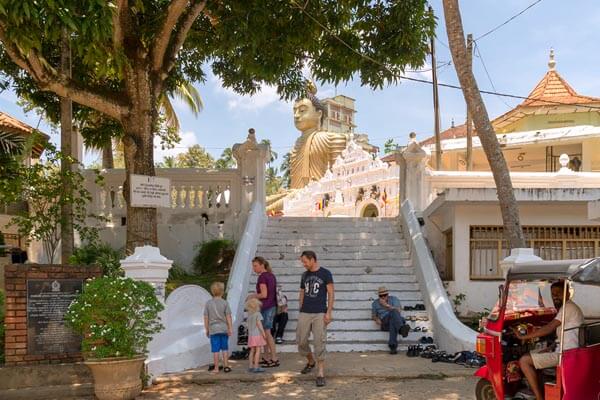
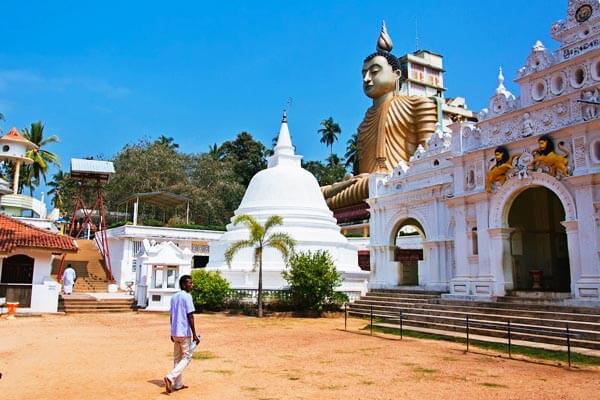
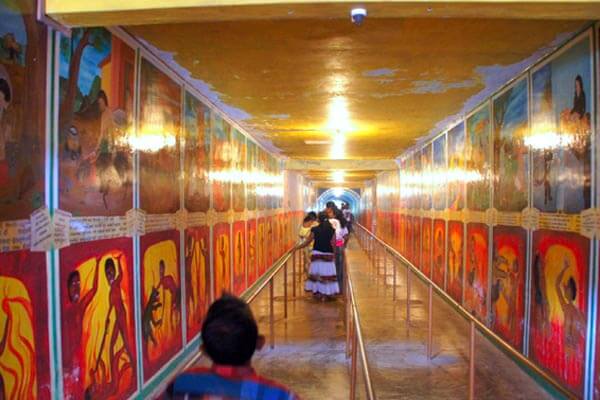
While travelling 15 miles east of Matara is the town of Dikwella, where there is one of the most amazing Buddhist temples in Sri Lanka. The Wewurukannala Vihara temple is dominated by an image of a seated Buddha. The temple has three parts, the oldest being about 250 years old; however this is of no particular interest. The next part has life size models of demons and sinners shown in graphic detail. Punishments include being drowned in boiling cauldrons, sawn in half, disemboweled and so on.
The temple walls show the path towards enlightenment by depicting hundreds of representations of events in the Lord Buddha’s life. Among one of the episodes is the chulla Dhammapala Jataka. It tells the story of how King Maha Prathapa of Varanasi on entering the palace found the queen cuddling her seven month old child. After ignoring him, the King was left insulted, the king ordered that the prince to be executed and the body to be thrown into the air. Several Jataka Stories are also amid the paintings, some selected for Vesak Day stamps in 1991. One depicts The Kattahari Jataka showing Prince Kastavahana, son of king Brahmadatta resting with his entourage.
The temple museum is a must see place if you visit there. The most impressive is the large clock which can be seen from the front side of the building. Inside of the clock is protected by a glass cubicle. The clock was built by a local craftsman called W. Elaris De Silva from Maggona in 1926 and purchased by the temple in 1928 for a sum of 3000 rupees. This mechanical masterpiece is in immaculate condition even today and rings at thewawa time daily at the temple in the morning and evening.
Activities : Religious Worshipping, Sightseeing
Sri Lanka Dream Tours organize various tour activities that includes folk dance & music program, local house visits, local market visits, dinner or lunch with a local family of the area and much more like this. These activities are organized as part of your tour program and gives real experience of India to any guest visiting India with us.
